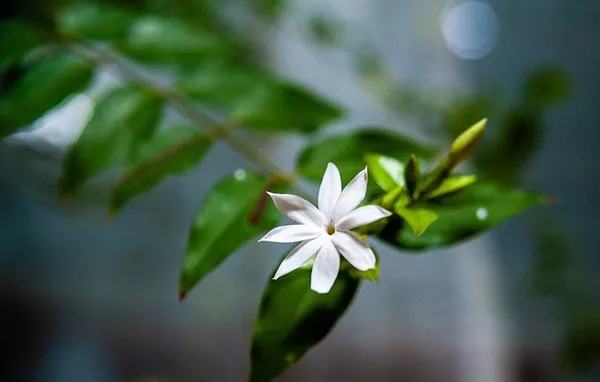Flowers have captivated humanity for centuries with their vibrant colors, delicate petals, and enchanting fragrances. Their fleeting beauty often leaves us yearning to preserve these natural wonders as lasting keepsakes. One popular method for doing so is pressing flowers. Pressed flowers can be used in various crafts, such as making greeting cards, framed art, or decorative bookmarks. However, pressing flowers without causing them to turn brown can be a delicate process. In this article, we will explore techniques and tips for preserving the vibrant hues of your favorite blooms while creating beautiful pressed floral art.
Choose the Right Flowers
Before embarking on your pressing journey, it’s crucial to choose the right flowers. Some flowers are naturally better suited for pressing due to their moisture content and thickness of petals. Ideally, select flowers that are flat and thin-petaled, such as pansies, violets, daisies, and ferns. Avoid flowers with thick, fleshy petals or high moisture content, as they are more likely to turn brown during the pressing process. Roses and tulips, for instance, are challenging candidates for pressing due to their thicker petals.
Harvest at the Right Time
Timing is crucial when it comes to pressing flowers. To ensure vibrant and colorful pressed blooms, it’s essential to harvest them at the right stage of their life cycle. Pick flowers when they are at their peak, just before they start to wither or fade. The morning is often the best time for harvesting, as the flowers are usually well-hydrated from the night’s moisture but have not been exposed to the heat of the day.
Use a Flower Press
Investing in a quality flower press is the foundation of successful flower pressing. Flower presses are specifically designed for this purpose, allowing you to apply even pressure and maintain the integrity of the flowers. These presses are available in various sizes and materials, including wooden and metal options. Choose one that suits your needs and budget.
Prepare the Flowers
Before placing your flowers in the press, take a few steps to prepare them properly:
a. Remove Excess Moisture: Gently shake the flowers to remove any dew or raindrops. Excess moisture can lead to browning during the pressing process.
b. Trim Stems and Leaves: Trim the stems and leaves of the flowers to minimize excess material and ensure they lie flat within the press. Remove any damaged or discolored parts.
c. Arrange Carefully: Lay the flowers flat on a sheet of absorbent paper or parchment paper. Arrange them in a single layer, ensuring they do not overlap. This will help maintain their individual shapes and colors.
Layer with Absorbent Material
Layering your flowers with absorbent material is essential to prevent moisture buildup and subsequent browning. Place the prepared flowers between layers of absorbent paper, such as blotting paper or parchment paper. Avoid using regular printer paper, as it may not effectively absorb moisture. After each layer of flowers, add a layer of absorbent paper until your press is full.
Apply Even Pressure
Once your flowers are neatly arranged between layers of absorbent paper, it’s time to apply even pressure. Close the flower press and secure it with the provided screws or straps. Be careful not to over-tighten, as this can damage the delicate flowers. The press should be firm but not excessively tight.
Allow Ample Drying Time
Patience is key when pressing flowers without causing browning. Place the closed flower press in a dry, dark, and well-ventilated area. Check on your pressed flowers periodically, but avoid opening the press unnecessarily, as this can disrupt the drying process. Depending on the thickness and moisture content of the flowers, it may take one to three weeks for them to fully dry and preserve their colors.
Replace Absorbent Paper
To prevent moisture from accumulating in the press, replace the absorbent paper as needed. If you notice that the paper has become damp, carefully remove the pressed flowers, discard the moist paper, and replace it with fresh, dry absorbent paper. This step is crucial for maintaining the vibrancy of the flowers during the pressing process.
Consider Microwave Pressing
If you’re looking for a faster way to press flowers without turning them brown, consider using a microwave flower press. This method involves using a microwave-safe press and short bursts of microwave heat to expedite the drying process. However, it requires careful monitoring to prevent overheating and browning. Follow the manufacturer’s instructions for microwave pressing to ensure the best results.
Preserve with Sealants
Once your flowers are fully dried and pressed, you can further protect their colors by applying a sealant. Options include clear spray sealants or clear adhesive sheets. These sealants help maintain the colors of the pressed flowers and protect them from environmental factors that could cause fading or browning.
Conclusion
Preserving the beauty of flowers through pressing is an art form that allows you to capture the essence of nature’s vibrant colors and delicate forms. By carefully selecting the right flowers, using a quality flower press, and following the proper techniques, you can create stunning pressed floral art without the risk of browning. Remember that patience and attention to detail are essential in this delicate process. With practice and dedication, you can create timeless keepsakes that showcase the timeless beauty of your favorite blooms. Happy pressing!


